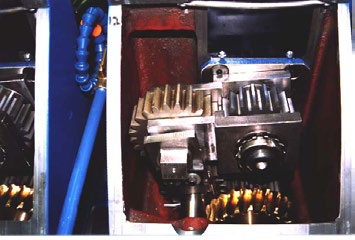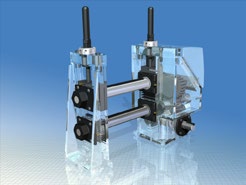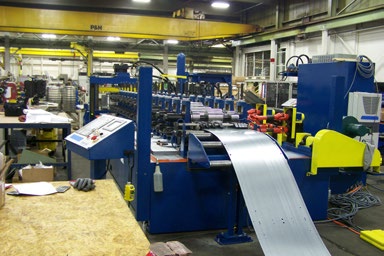The roll forming machine is the instrument needed to convert strip to a finished cross section. There are multiple styles of roll forming machines on the market today which are specialized for different applications and operations. In this post, we'll explain the main types of roll forming machine styles and applications to give you an idea of the range of equipment available.
The Forming Machines
Common to all makes is a fabricated base, roll spindles, spindle support housings and a drive. The most popular forming machine is the integral drive type, one head of which is illustrated below.

Several manufacturers make this style of machine in standard sizes of 1½”, 2”, 2½” and 3” spindles to accommodate mild steel up to about .180” thick in widths to 24”. Each can be made with as many heads as desired, as few as two or three or as many as thirty-six, although generally twelve to fourteen meet most requirements. As you can see, each pair of spindles is carried in a separate gear-head, and each has it’s own splash lubricated worm and gear train. Since the upper roll spindle must be adjustable for rolls of different diameters, it is driven through a toggle or link type gear arrangement from the bottom spindle permitting adjustment without sacrificing pitch line mesh of the gears. A micrometer dial on each adjusting screw indicates spindle adjustment and parallel. The outboard housing is removable from the spindle as a complete assembly to permit roll changes.

For applications in which the limits of the self-contained gear-head construction have to be exceeded or in which additional versatility is desired, the spindle arrangement shown below is used. Here the gearbox is set back from the spindle housings and the spindles are driven through universal couplings. This type machine has been made with spindles up to 15” diameter for heavy structural products and large pipe.




